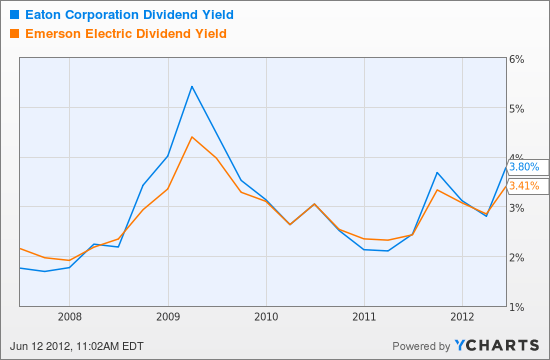Drilling for dividends in emerging markets
Post on: 7 Май, 2015 No Comment

JohnPrestbo
NEW YORK (MarketWatch) — Two popular investment themes — dividends and emerging markets — are now combined in indexes that have ETFs based on them.
As usual in the indexed investing realm, these indexes measure the same thing in different ways, with different results.
Our Trading Deck has been home to a spirited debate over whether were in for a crash.
The first index, the S&P Emerging Markets Dividend Opportunities Index, is the basis of the SPDR S&P Emerging Markets Dividend ETF EDIV, +0.85% , which made its debut on Feb. 23 of this year. It is listed on the New York Stock Exchange’s Arca platform.
Up next is the Dow Jones Emerging Markets Select Dividend Index. This ETF benchmarks iShares Dow Jones Emerging Markets Select Dividend ETF, which began trading Nov. 28 on the London Stock Exchange.
Similar goals, different tactics
Both indexes have the same objective — tracking the stock prices of 100 companies that are based in emerging markets and which pay high dividends. They both draw from basically the same “universe” of stocks in the same countries. But thereafter, they diverge.
The S&P index excludes any company with market value of less than $300 million. The Dow Jones index lowers that threshold to $250 million. As a result, the weighted average size of the S&P components is $4.56 billion, versus $2.89 billion for the Dow Jones index.
Bottom line: The S&P index tilts toward larger companies and the Dow Jones index leans toward smaller ones.
However, which index has the stiffer rules varies by topic. Take liquidity, for example. The Dow Jones index requires $2 million of average daily trading volume for each stock, while S&P accepts $1 million.
Asia week ahead: Data from China and Japan
Economic data from China and Japan will dominate the calendar in the coming week, with Japans quarterly tankan survey and HSBCs preliminary monthly manufacturing survey the two biggest headlines. MarketWatchs Rex Crum reports.
Profits screens and dividend-paying histories are also points of differentiation. Both indexes demand that components be profitable in the 12 months preceding each review (annually for the Dow Jones index and semi-annually for S&P’s). But S&P additionally requires each component to have positive earnings growth over the preceding three years.
On the other hand, the S&P index considers all companies that have paid dividends in the past year. Dow Jones demands that companies have paid dividends in each of the past three years
These rules make the S&P index a bit more “growthy” in terms of style, leaving the Dow Jones version with a value tint by comparison.
Divergent portfolios
The net effect of all this is that only 36 stocks are held in common, as of November, out of the 100 components in each. That amounts to roughly 40% of the weight in the Dow Jones Index and the SPDR S&P ETF (which we must use as a proxy because S&P does not disclose its index components). That means about 60% of both indexes’ weight is in stocks held exclusively by each.














